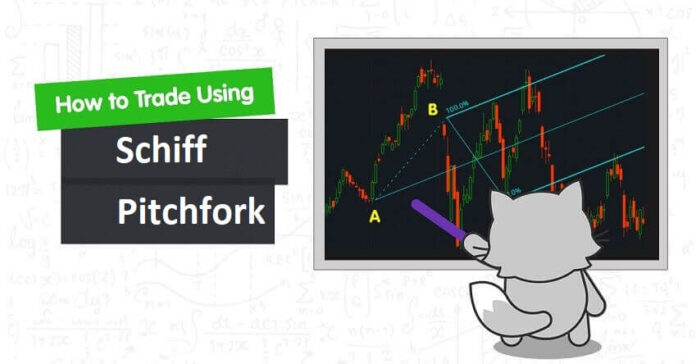The Schiff Pitchfork is a drawing tool used in technical analysis that is derived from the standard pitchfork, known as Andrew’s Pitchfork.
There are three basic components of a standard pitchfork.
There is a center median line (trend line) as well as two more sets of lines above and below that median line.
The additional lines are set a specified number of standard deviations away from the median.
Where the Schiff Pitchfork differs is that its origin’s location is modified from a standard pitchfork.
Alan Andrews, the creator of the standard pitchfork, worked with many traders, teaching his pitchfork method.
A New York trader named Jerome Schiff came to Andrews with a hypothesis that in many cases, when the price is in a shallow up or down trend, the pitchfork is too steep.
So Schiff devised a manner by which the fork could be made to predict a more shallow path.
That variation of the pitchfork is known as the Schiff Pitchfork.
The Schiff Pitchfork’s origin is located at 1/2 the vertical distance and 1/2 the horizontal distance between the high and low points (first two points set).
A Schiff Pitchfork (just like Andrew’s Pitchfork) is created by first drawing a trend line between two extreme points.
A third point is then set either above or below the second point depending on the analyst’s desired Schiff Pitchfork location.
Keep in mind that the default Schiff Pitchfork setting calls for two additional sets of lines to be drawn.
The basic idea behind the use of a Schiff Pitchfork and a standard pitchfork is that it essentially creates a type of trend channel.
A trend is considered active as long as the price stays within the Schiff Pitchfork channel.
Reversals occur when price breaks out of a Schiff Pitchfork channel.
If this article seems useful to your then please click the like button below. You can also share your valuable feedback or ask questions in the below comment section. Also, subscribe to our newsletter for trading-related updates.







